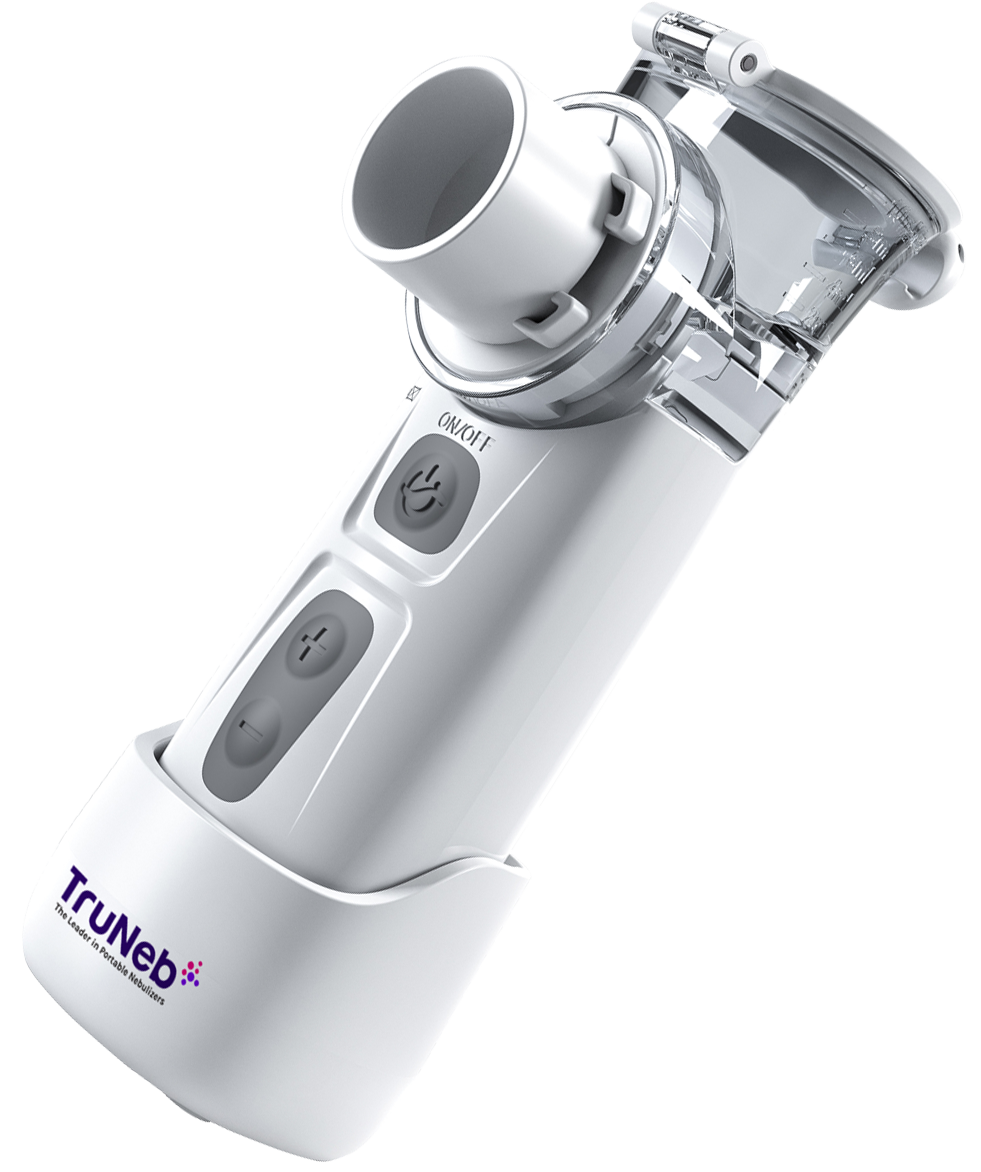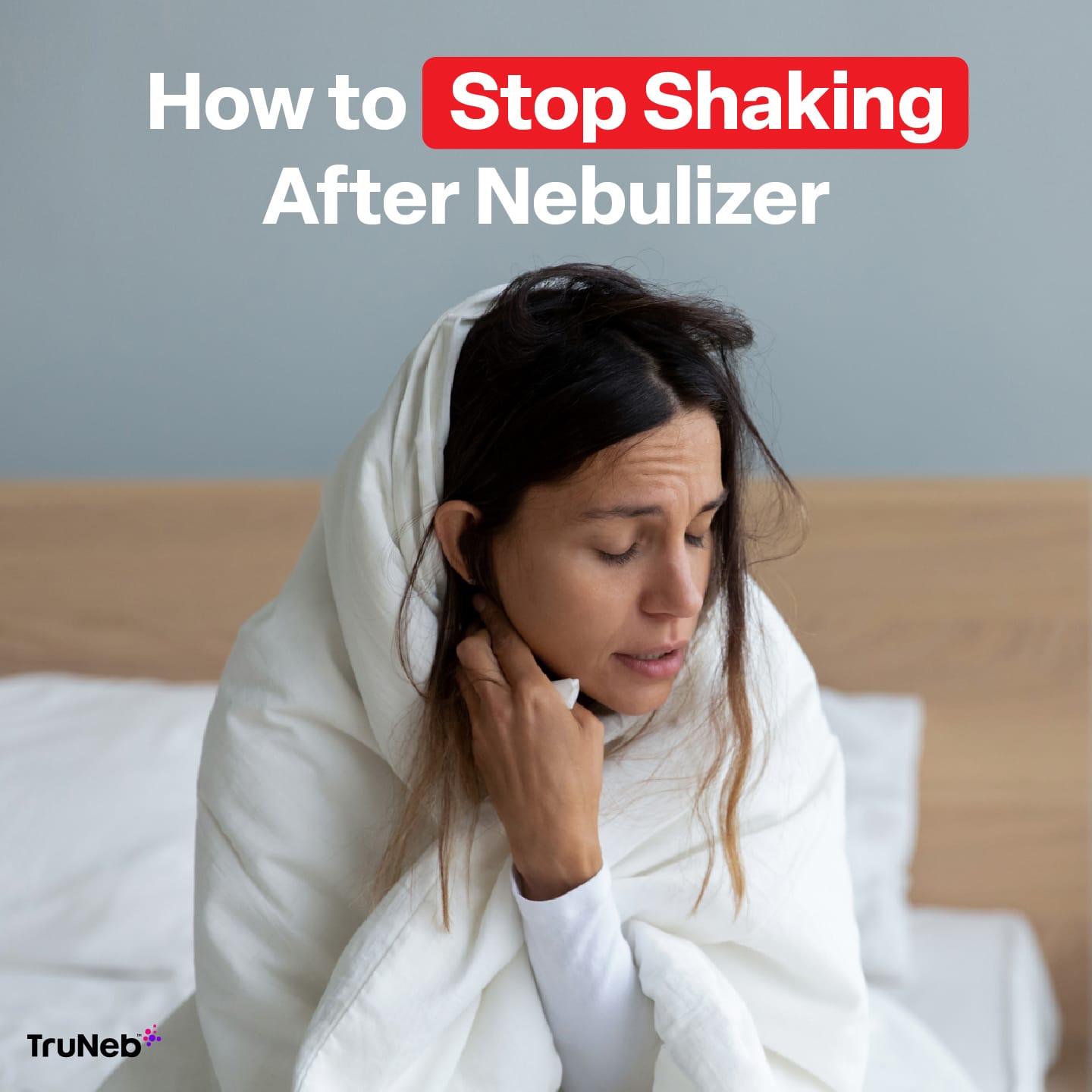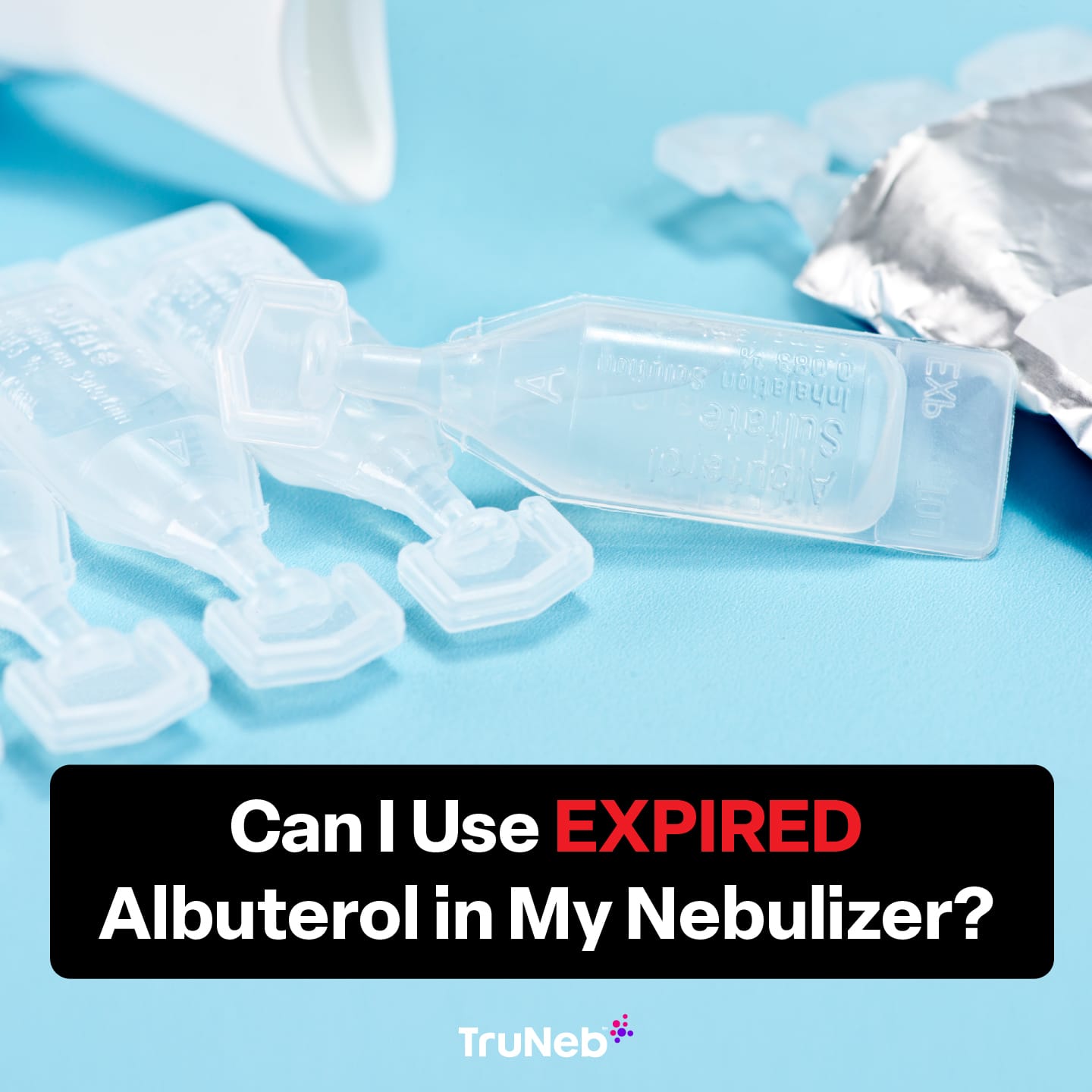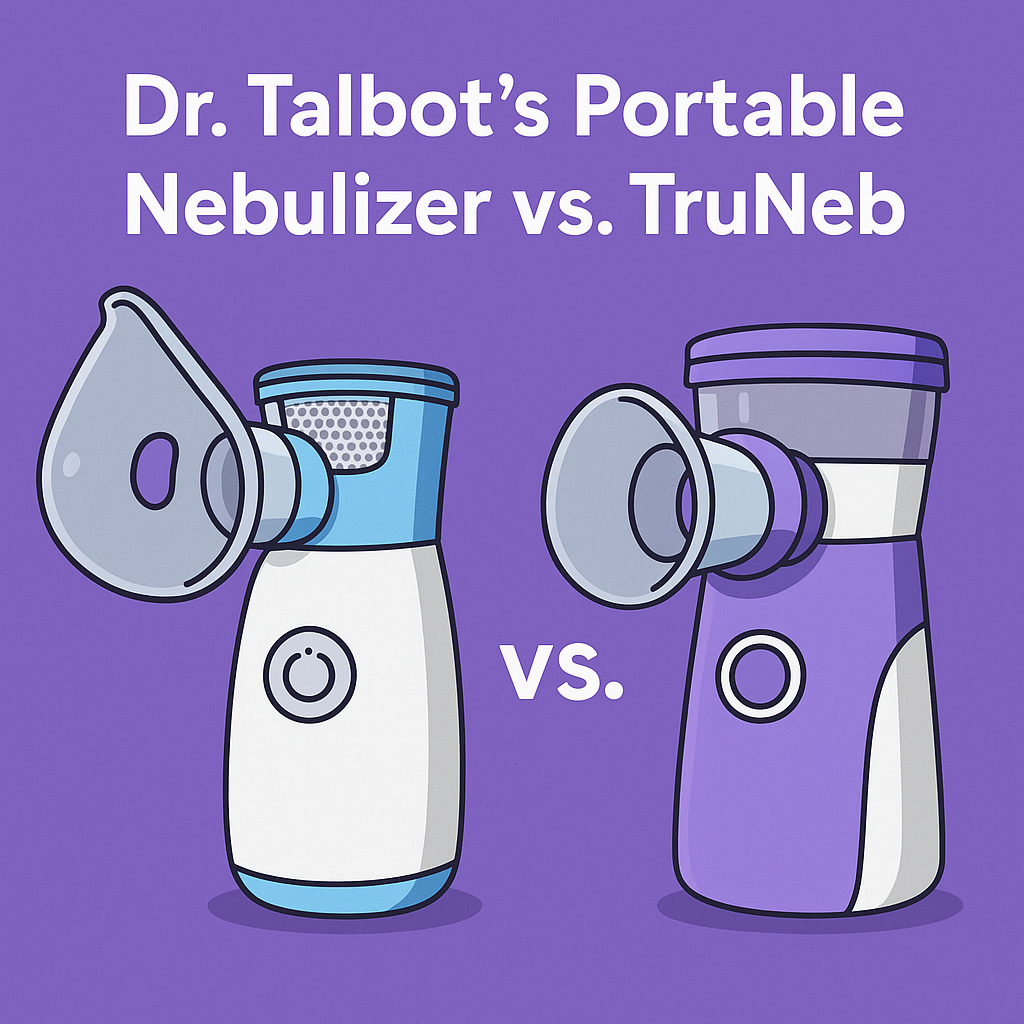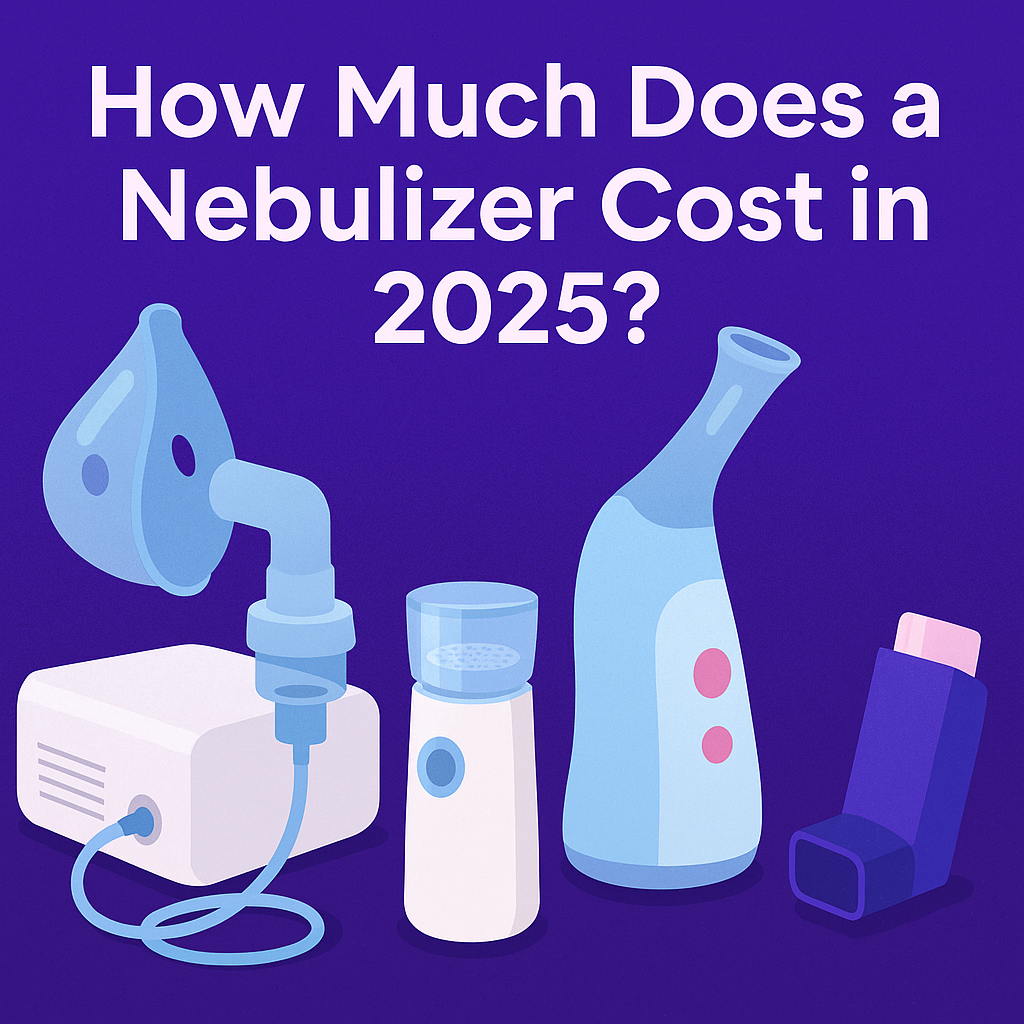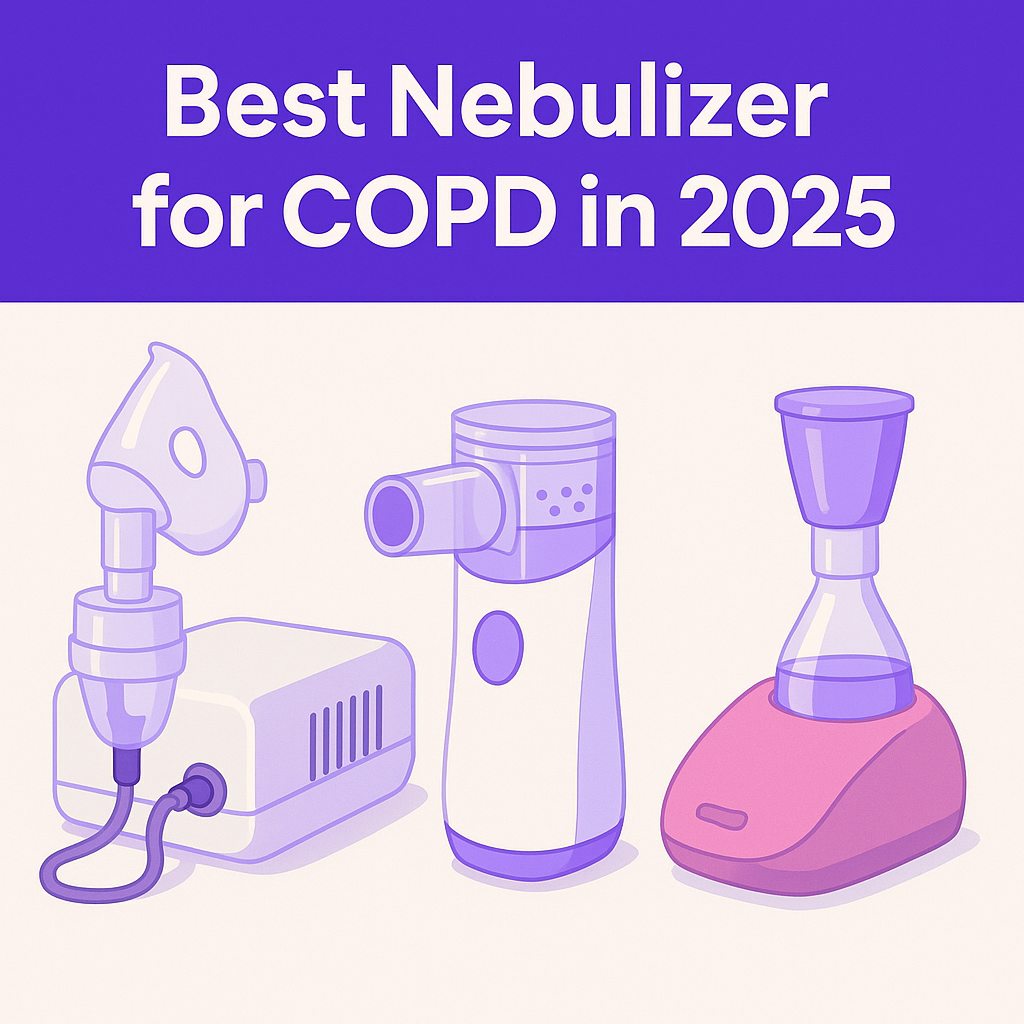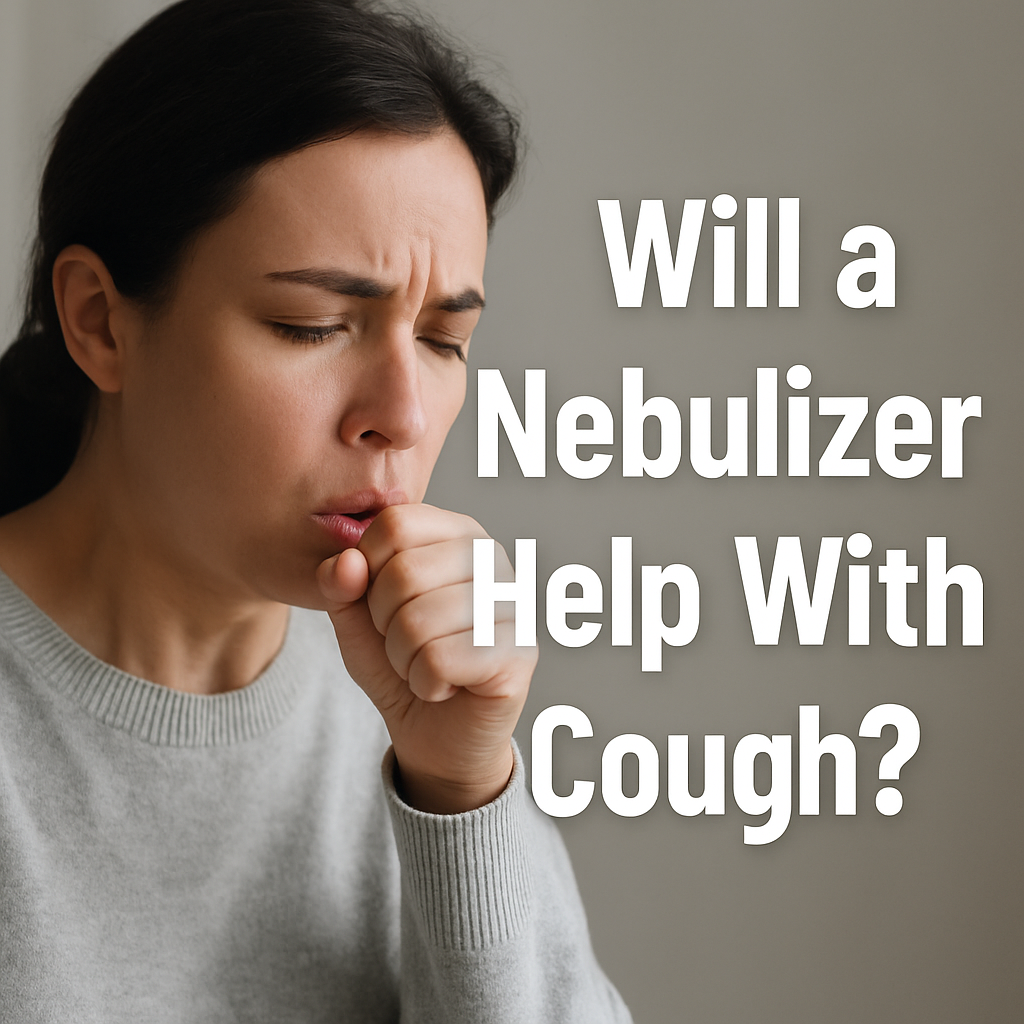On this page
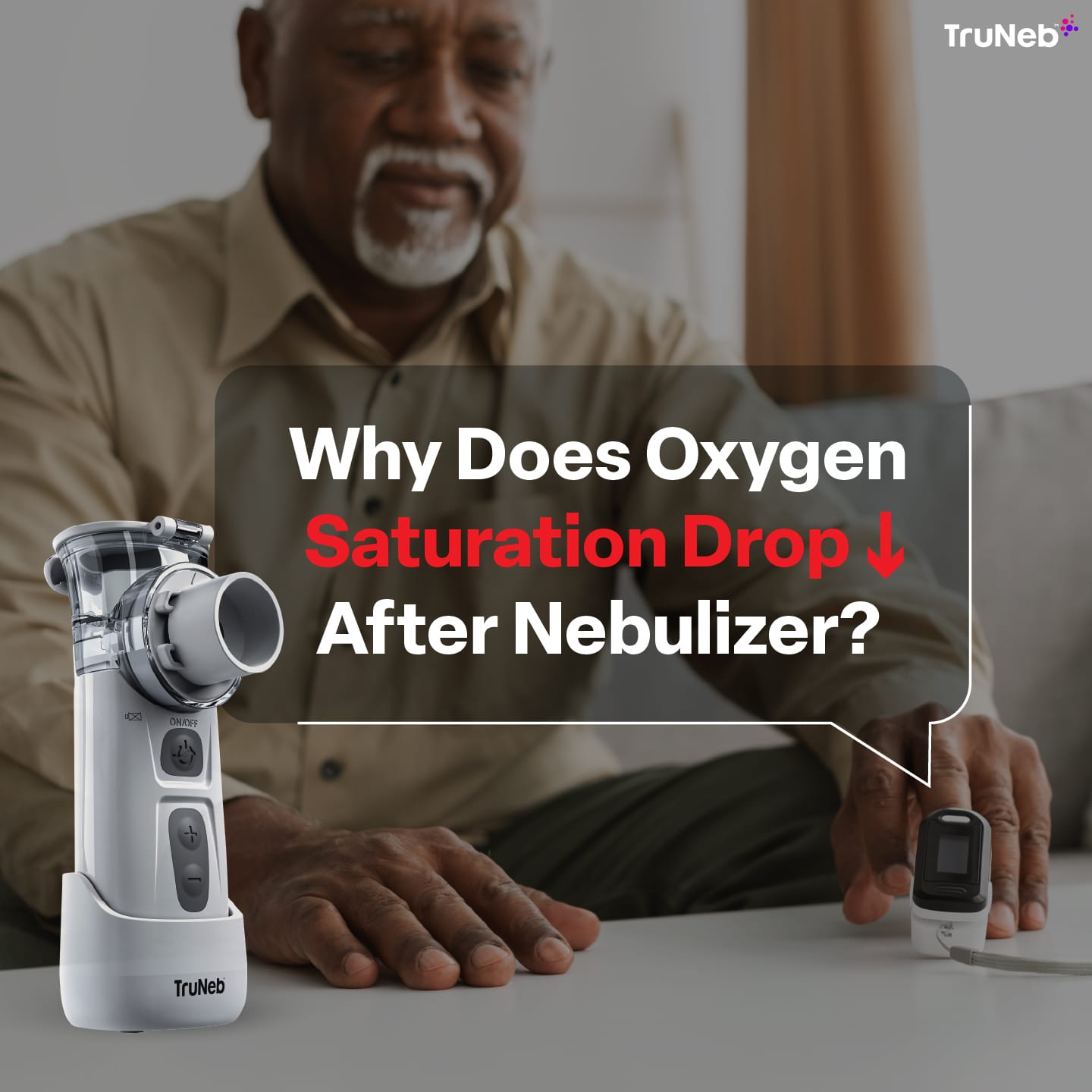
Your oxygen saturation, or SpO2, is a measurement of the saturation of peripheral oxygen – in other words, the ratio of hemoglobin that contains oxygen to the total amount of hemoglobin in your blood.
Most healthy children and adults will have an SpO2 in the high 90s to 100%. Conditions like asthma, COPD, pneumonia, and other illnesses and diseases can cause your oxygen saturation to drop. When the lungs are sick, oxygen isn’t effectively transferred to the bloodstream because of impaired gas exchange.
In rare cases, you might experience an oxygen saturation drop after nebulizer therapy. Let’s dive into some of the reasons this can happen and what to do if it happens to you.
Causes of Oxygen Saturation Drop After Nebulizer Therapy
There are a few less common causes of your oxygen saturation dropping after doing a nebulizer. While some may resolve quickly, others may require a call to your doctor or immediate medical attention.
Paradoxical bronchospasm
Paradoxical bronchospasm is a rare but potentially serious side effect that can happen after using a nebulizer with bronchodilator medications like albuterol or levalbuterol. These medications are supposed to open up the airways and make breathing easier, but in some cases, they can cause the opposite effect – a sudden tightening of the airways.
This spasm of the airways can cause your oxygen saturation to drop, leading to wheezing, chest tightness, and difficulty breathing. If you experience this during your nebulizer treatment, call your healthcare provider right away or call 911.
Using air instead of oxygen
This generally isn’t going to apply to people taking nebulizer treatments at home. But if a person requires oxygen (whether all the time or because of a serious illness) and takes a nebulizer with compressed air, oxygen saturation can drop. This is because you’re breathing in room air through your mouth and not oxygen like you need.
This is temporary and your oxygen will return to normal as soon as the treatment is done. If high levels of oxygen are needed, a nebulizer should be given via oxygen in a hospital setting.
Oxygen-induced hypercapnia
This effect can happen in individuals with COPD (and again, typically would only happen in a hospital setting). If a high concentration of oxygen is given during nebulization, it may lead to a temporary decrease in a person’s drive to breathe. This can result in higher levels of carbon dioxide (hypercapnia) and a drop in oxygen saturation.
What to do if you notice a drop in oxygen after using your nebulizer
If you’re using a pulse oximeter to measure your SpO2 and notice a drop in your oxygen level, it’s always good to follow up with your healthcare provider. Any drop in oxygen level that’s also accompanied by difficulty breathing and chest pain is a sign immediate medical attention is needed.
What other conditions can cause oxygen saturation to drop?
While oxygen saturation can drop after nebulizer therapy in rare cases, there are several other conditions that can cause your SpO2 to decrease. Some of the most common include:
Pneumonia: This infection causes the air sacs in the lungs to fill with fluid or pus, making it difficult for oxygen to pass through into the bloodstream. As a result, oxygen saturation levels can drop.
Chronic Obstructive Pulmonary Disease (COPD): COPD is a group of lung diseases, including chronic bronchitis and emphysema, that cause airway obstruction and breathing difficulties. This can lead to lower oxygen saturation levels, especially during exacerbations or flare-ups.
Asthma: During an asthma attack, the airways become inflamed and narrowed, making it harder to breathe. This can cause a decrease in oxygen saturation.
Pulmonary embolism: A pulmonary embolism happens when a blood clot becomes lodged in the lungs, blocking blood flow and reducing the amount of oxygen that can be absorbed into your blood.
Interstitial lung disease: This group of disorders causes scarring and inflammation of the lung tissue, which can impair gas exchange and lead to lower oxygen saturation levels.
Sleep apnea: People with sleep apnea experience repeated pauses in breathing during sleep, which can cause oxygen saturation to drop.
Heart conditions: Certain heart problems, such as congestive heart failure or congenital heart defects, can affect the body’s ability to circulate oxygenated blood effectively, leading to decreased SpO2 levels.
If you notice a consistently low oxygen saturation, or one lower than normal that’s also associated with shortness of breath – it’s important to seek medical care promptly.
Try the TruNeb™ Portable Nebulizer
Make breathing treatments easier with a pocket-size portable nebulizer that can go anywhere you do. Take it to work, school, or the gym – it’s compact enough to fit in a bag or purse. The TruNeb™ portable nebulizer is chargeable and has no air compressor or tubing to mess with. Simplify your nebulizer treatments today.

